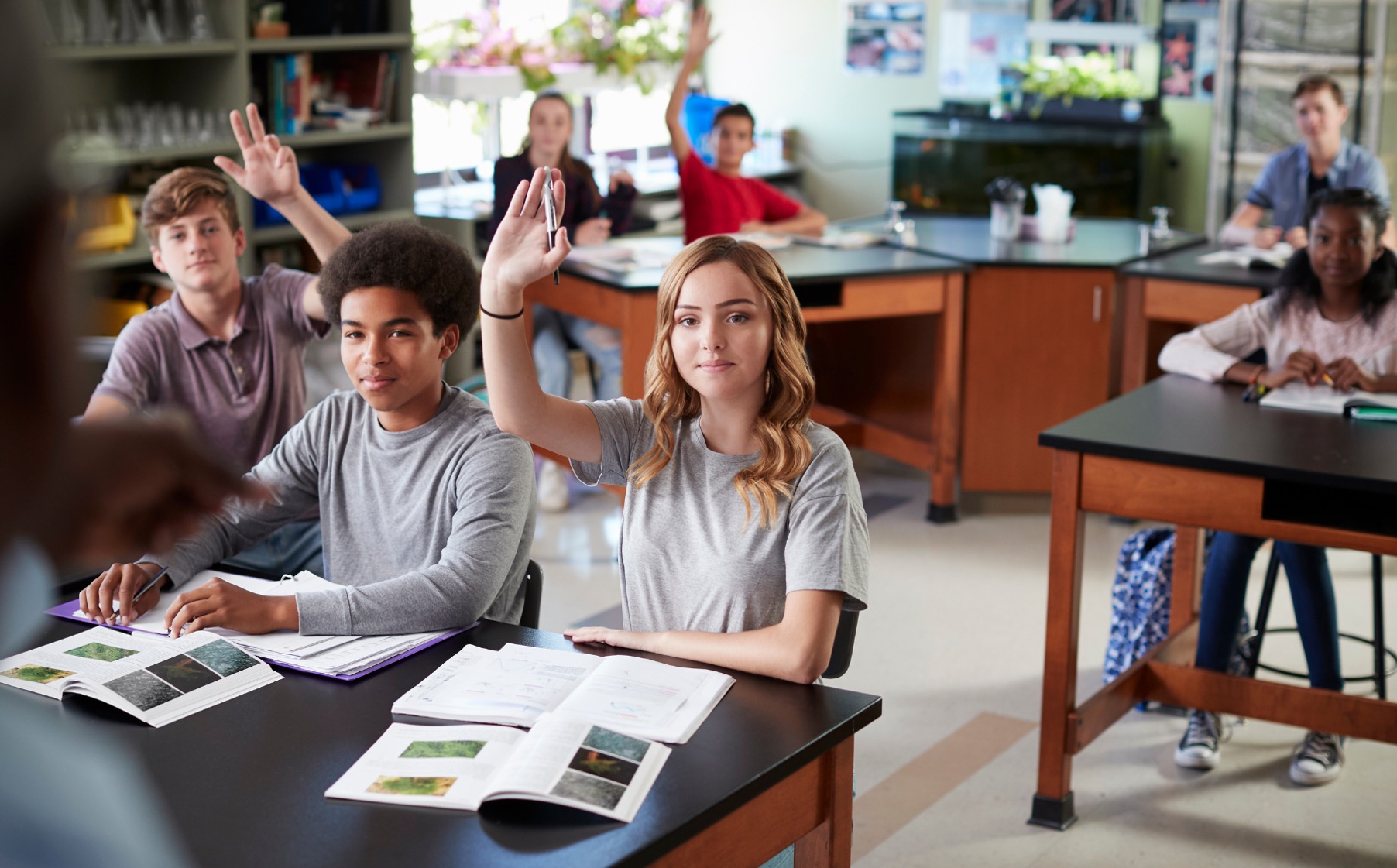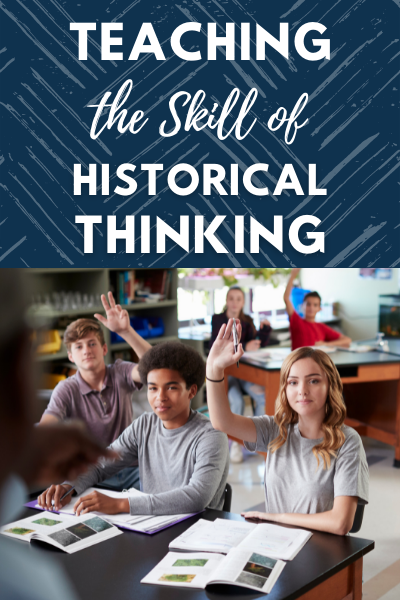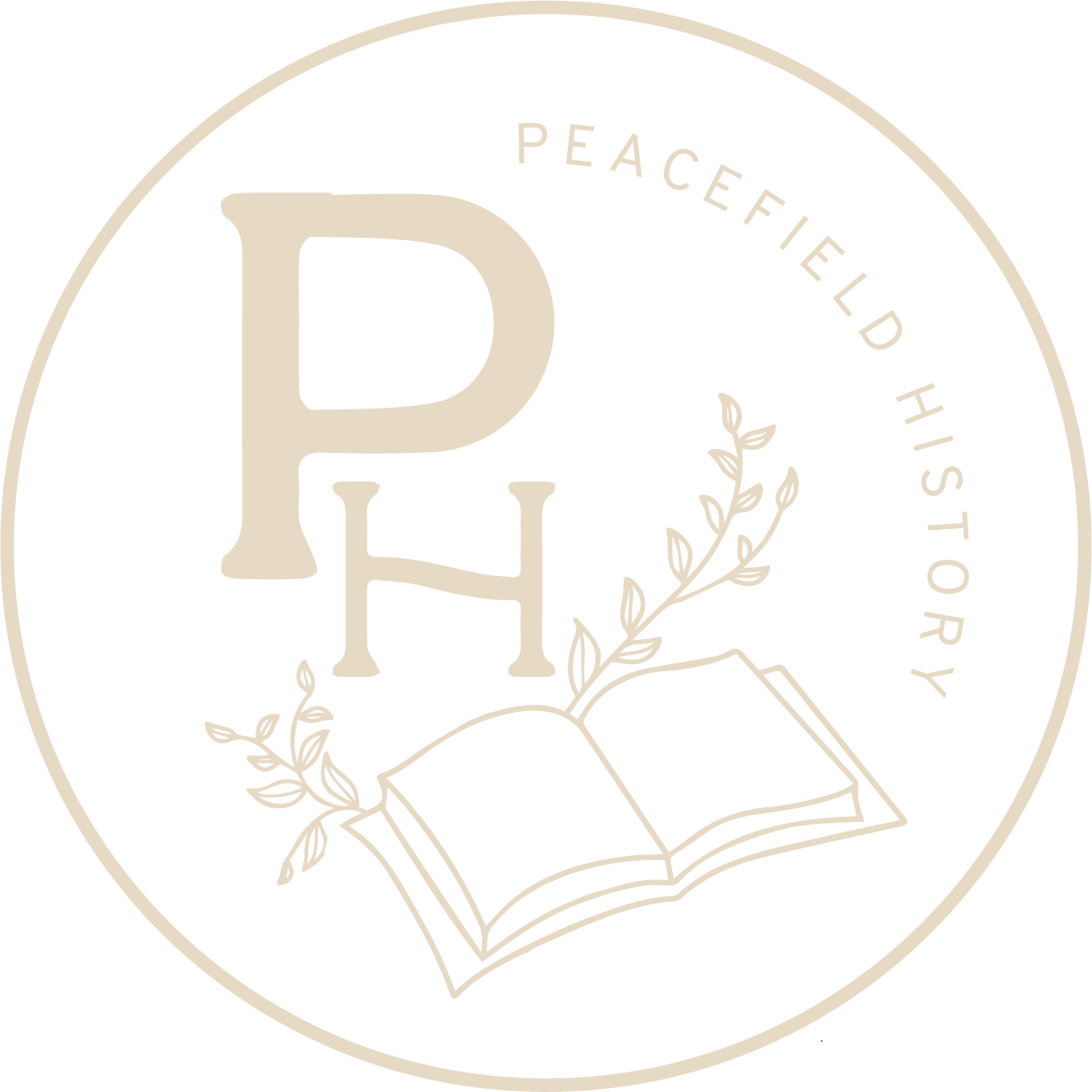
This blog post came about as a result of a question from a reader through my Instagram. She was wondering how I actually go about teaching the skill of historical thinking that is so embedded throughout my curriculum. I realized that this lesson has become so embedded in my teaching that I really didn’t think about it as a teachable skill. Therefore, I decided to lay out my process for explaining historical thinking to students.
First, you need to acknowledge that historical thinking just isn’t an obvious task for your students
It is a process to teach historical thinking to students. While we might see it as a clear set of procedures, students certainly don’t have the same grasp on the idea. Their little brains are still just transitioning towards abstract thinking. Students will not understand the complexity of breaking down a primary source the first time, or the second time, or even after a week. They need repetition so that it becomes embedded in their understanding.
With my middle school students, I’ve found that most need an introduction to the process of historical thinking. They’ve likely had limited experience in elementary school and limited exposure to primary documents. This is often a reflection of the curriculum. In NY, students learn Ancient History in grade 6. As there are fewer written primary source documents from Ancient History, teachers struggle to find sources that are appropriate and accessible for students at that age.
Therefore, I often assume that students are new to the process entirely, and I don’t expect much prior knowledge. If you teach older students you might have higher expectations.
Three points to consider when choosing a primary source:
Point 1 – When introducing historical thinking, it helps to utilize documents that have some natural appeal. It’s also beneficial if students have some familiarity with the source. Although teachers might eventually introduce documents that are entirely new to students, we don’t want the first roadblock in their thinking to occur before they’ve even attempted to start. It’s much easier to engage students with a document about the Salem Witch Trials or World War II than to start with a full-text draft of the Mayflower Compact. (My apologies to the authors of the Mayflower Compact, but it’s a real snoozer.)
Point 2 – I have no problem just modifying the text of a primary source. The main purpose of primary source analysis is to have students figure out where the documents fit within the historical narrative. Why is it important? Although the words utilized by the original author might be a piece of that understanding, it shouldn’t be a barrier. Simply put, the language of a document shouldn’t prevent students from accessing the ideas. Therefore, I might skim the piece and pick out a few words that reflect the complexity and nuance of a source. The rest I just change to words students are more likely to understand.
Point 3 – Remember, documents aren’t just text. Students can glean just as much about an era while examining a painting, a photograph, or if the time period allows – a video. Those students who might stare silently when reviewing a primary text often light up when I show them a painting to analyze. This is also so beneficial for students who are still learning English.
Take these three points into consideration as you find engaging and accessible primary sources for students to work with. Once you’ve found a few that fit with your curriculum, you can start introducing them to your students!
Day 1 – Modeling Historical Thinking through Sourcing and Context
The first skill I introduce to students beyond sourcing is historical context. I find that this skill is the most important and easily acquired. Also, it provides such a simple way to assess understanding of a topic. If a student can describe the context of a primary source, they definitely have more than a basic understanding of the topic. It’s a tool I use over and over throughout the school year.
One of the ways I broach historical thinking early on is through modeling the process of breaking down a document with sourcing to find the context. Really this lesson follows the classic I do – we do – you do.1 I’ll choose either a high-interest document or a document related to the current unit of study. At this point, I don’t expect students to do anything with the document individually besides look at the document, and if it’s text, I will expect them to read with me as I read the words.2
Once I’ve read the document to the students, I’ll read back through and model the process of sourcing while I mark phrases and pretend that I’m the one examining the document. This might be accompanied by lots of hand gestures and exclamations like, “hmmmm,” or, “I wonder what she means here,” or, “What the heck does this word mean…” Basically, I’m trying to visualize my thought process for students. Usually, students will add in their own observations as I complete this process. Then, I’ll ask students to tell me how they can link this document to other topics of discussion. As they chime in with ideas I’ll add correct statements to the board. As a final statement, I’ll point out that this is historical context! The historical events that caused this source, that explain this source, that help us to understand this source? – All context!
That might be it for that particular day. I’ll probably transition towards the lesson I’ve scheduled for that day.
Day 2 – Practicing Historial Thinking
The next day of class, I’ll require more from students. A new document will be shared, but this time students might have their own copy. If it’s possible, I might have students gather in groups to read through the document. If I really want to expand the process, I might give each group a different document. There are many options to consider depending on the time available and student need. Instead of me reading the document to the class, one of the students in the group might read the document instead. I might have a series of questions they answer collectively. This can be a formal worksheet or as informal as a post-it note.
Day 3 – Individual Practice
The next day, I’ll have students look at a document individually. You can throw them a softball – at first, give them a really accessible document and then give them one that requires a bit more skill. This might occur over the course of more than one day – or more than one week – or more than one unit.
Day 4 and Beyond – Practice, Practice, and more Practice
As I noted at the beginning, nurturing your budding historians is a process. It might seem like they completely understand the skill of historical context – but then you introduce a new topic and all their understanding goes out the window. As you introduce new skills – like point of view or intended audience – you’ll probably need to start right back at the modeling stage.
If you’d like to save some time with your planning, I have bell ringers for U.S. History that are all primary or secondary sources, and they can be adapted for any historical thinking question. I also have handouts that scaffold historical thinking for students.
1 I can’t stand how teachers are required to do this each day of the school year. It’s just nonsensical.
2 Of course, some students are exempt from this requirement as they might focus better by listening or just hearing me read.

How do you teach historical thinking? Do you have any tips to add to the process? Add your ideas to the comments section.
